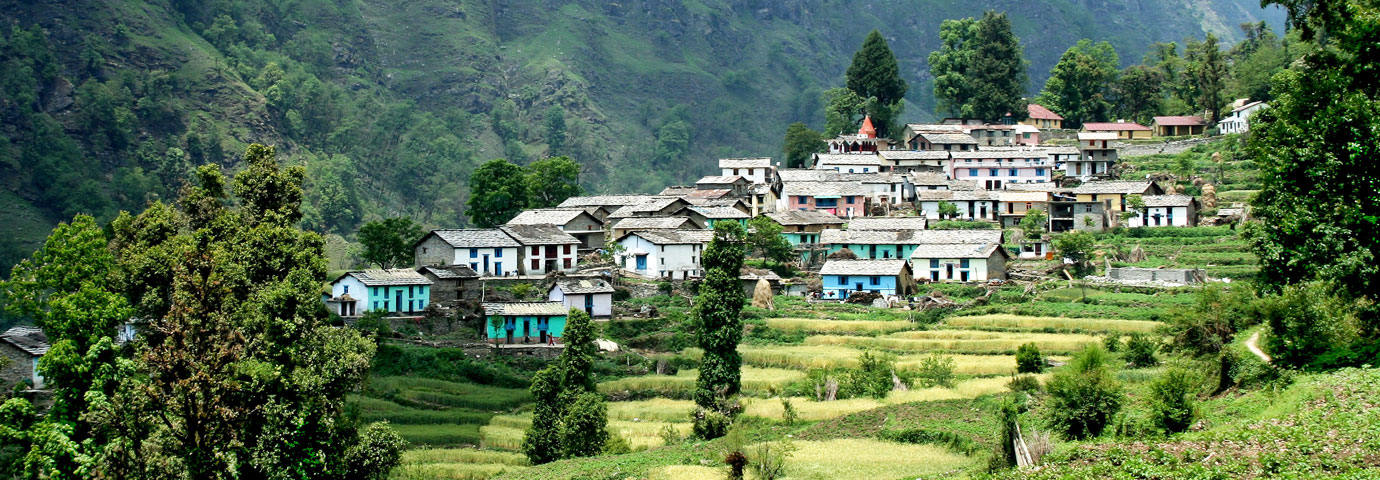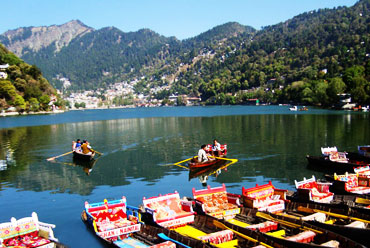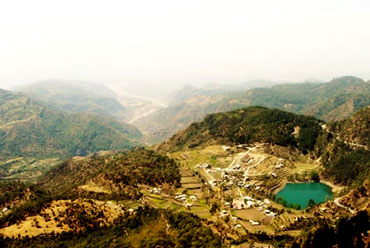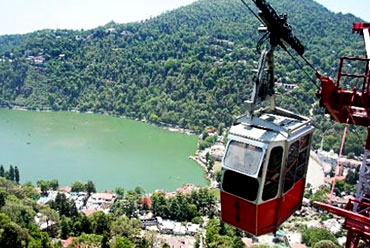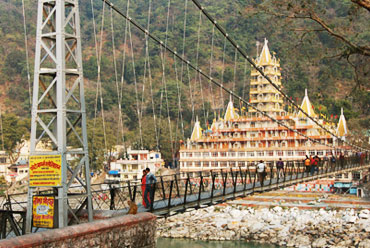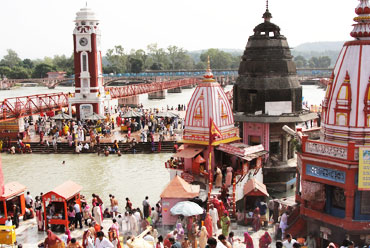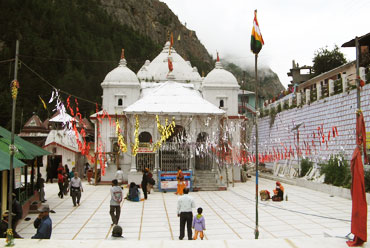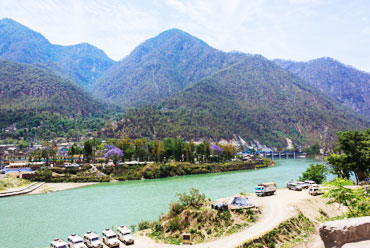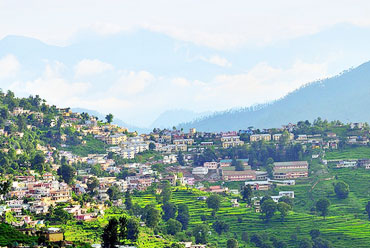The word Kumaon is believed to have been derived from "Kurmanchal," meaning land of the Kurmavatar (the tortoise incarnation of Lord Vishnu, Preserver of the Hindu Trinity). The region extends from the northern end of the Gangetic plains right up to Tibet. The snow-clad mountains, crystal-clear lakes, and the plethora of flora and fauna not only enable one to constantly think about the Himalayas but to behold their pristine magnificence time and again.
Kumaon hills provide vast attraction for the tourists, trekkers, and pilgrims. The beautiful scenery and the colourful cultural life of Pithoragarh, Mukteshwar, Chaukori, Binsar, Kausani, Sitalakhet, Champawat, besides many other popular hill stations, are waiting to be discovered.
Location
Kumaon, with an area of 21,035 sq km, is situated in the north Indian state of Uttaranchal (formerly part of Uttar Pradesh). It is parted from Nepal in the east by River Kali. The Kailash-Mansarovar region of Western Tibet forms its backdrop in the north. In the west, the Chamoli and Pauri districts of Garhwal region make the boundary. Kumaon shares its southern boundary with the districts of Bareilly, Pilibhit, Rampur, Muradabad, and Bijnor.
Kumaon is the land of the Mahakali and its major right bank tributaries, the Goriganga, the Dhauliganga, and the Ramganga.
The geology of the Kumaon has three distinct components. The greater Himalayas is mainly composed of granites. The lesser Himalayas is characterized by the presence of unfossiliferous sediments and has mainly crystalline and metamorphic rocks like gneisses, schist, slates, phyllite, etc. Apart from these three divisions, the Terai region consists mainly of detritus, which is washed from the Shivalik range by fast flowing rivers. Boulders and shingles are found closer to the hills while clay and sand are transported to larger distances.
History
Humankind has been around in Kumaon for a very long time. Evidences of Stone Age settlements have been found in Kumaon, particularly the rock shelter at Lakhu Udyar. The paintings here date back to the Mesolithic period.
The early medieval history of Kumaon is the history of the Katyuri dynasty. The Katyuri kings ruled from the 7th to the 11th century, holding sway at the peak of their powers over large areas of Kumaon, Garhwal, and western Nepal. The town of Baijnath near Almora was the capital of this dynasty and a center of the arts. Temple building flourished under the Katyuris and the main architectural innovation introduced by them was the replacement of bricks with hewn stone.
On a hilltop facing east (opposite Almora), is the temple of Katarmal. This 900-year-old sun temple was built during the declining years of the Katyuri dynasty. The intricately carved doors and panels have been removed to the National Museum in Delhi as a protective measure after the 10th-century idol of the presiding deity was stolen.
After an interregnum of a couple of centuries, the Chands of Pithoragarh became the dominant dynasty. The magnificent temple complex at Jageshwar, with its cluster of a hundred and sixty-four temples, was built by the Chand rulers over a space of two centuries. Dedicated to Lord Shiva, the evocative carvings are complemented by the beautiful cedar forest around it.

